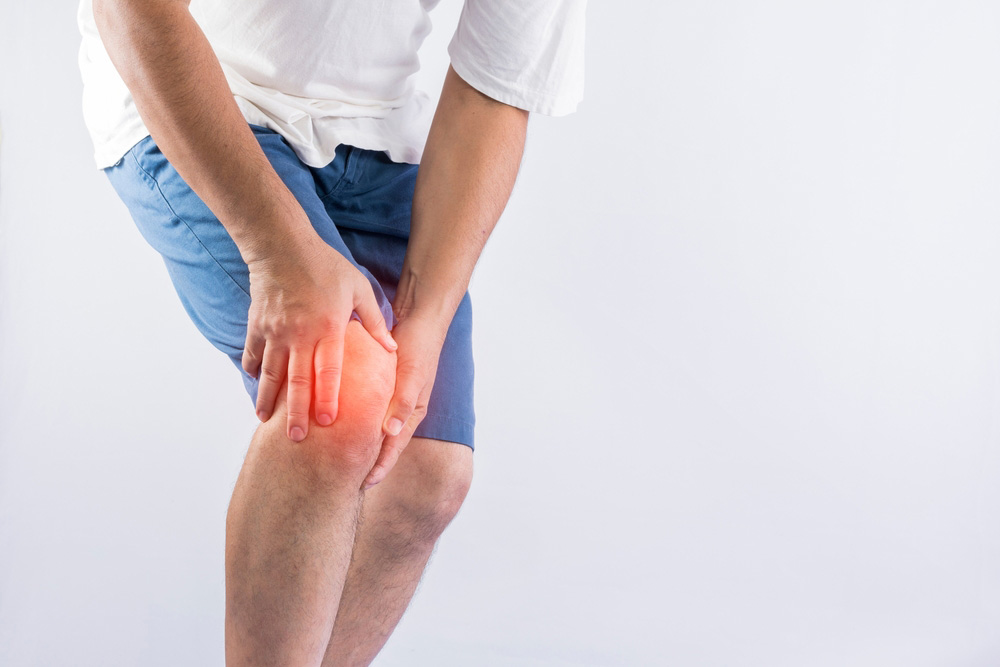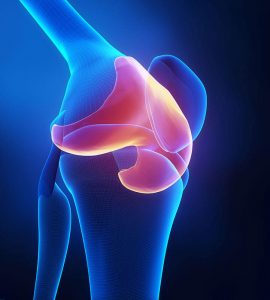
Attain Optimal Relief From Knee Pain
Knee pain is one of the most common complaints among people of all ages — whether you’re an athlete, office worker, or senior. It can affect your ability to walk, exercise, or even sleep comfortably. At Quantum Orthopaedics, we provide specialised knee pain treatment in Singapore tailored to your unique condition and lifestyle.
From non-surgical therapies to advanced surgical options, our goal is to help you move freely, recover quickly, and avoid long-term complications.
Types of Knee Pain Treatments
At Quantum Orthopaedics, we take a comprehensive and personalised approach to managing knee pain. We believe in treating conservatively wherever possible and turning to surgery only when absolutely necessary. This patient-first philosophy ensures that you receive the right level of care, tailored to your specific condition, lifestyle, and recovery goals.
Our treatment options fall into two main categories: non-surgical (conservative) treatments and minimally invasive or surgical interventions.
Non-Surgical Knee Pain Treatments
Non-surgical treatments are typically the first line of management, especially for early-stage conditions or injuries that can heal with rest, therapy, and time. These treatments aim to reduce pain, improve mobility, and restore function without the need for invasive procedures.
1. Physiotherapy
Physiotherapy plays a critical role in knee pain management as they can design customised exercise programs that:
- Strengthen the muscles around the knee joint (particularly the quadriceps and hamstrings)
- Improve joint stability and range of motion
- Correct biomechanical imbalances that may be contributing to pain
- Prevent future injury and progression of degenerative conditions
Programmes may include guided stretching, resistance training, balance exercises, and manual therapy techniques.
Who benefits: Patients with early osteoarthritis, patellar tracking issues, meniscal injuries, ligament strains, or post-operative recovery needs.
2. Activity Modification & Bracing
In many cases, knee pain is worsened by repetitive strain or improper loading of the joint. Simple changes to activity can reduce stress on the knee and allow healing to begin.
- Switching from high-impact to low-impact activities (e.g., cycling or swimming instead of running)
- Adjusting posture or gait to reduce joint stress
- Avoiding deep knee bends or prolonged standing
In addition, knee braces or orthotics can provide external support, improve alignment, and offload pressure from damaged areas. This is particularly useful in cases of:
- Patellar instability
- Ligament sprains
- Medial or lateral compartment osteoarthritis
3. Medications
Pharmacological treatment is often used to control inflammation and manage pain during flare-ups or ongoing conditions. These include:
- Non-Steroidal Anti-Inflammatory Drugs (NSAIDs) such as ibuprofen or naproxen, which reduce both pain and inflammation
- Acetaminophen (paracetamol) for mild to moderate pain without anti-inflammatory action
- Topical anti-inflammatory gels or patches
- Prescription medications (for rheumatoid arthritis or severe inflammation)
While medications provide symptom relief, they are often combined with physiotherapy and lifestyle changes for long-term results.
4. Knee Injections
Intra-articular injections can provide more targeted and longer-lasting relief, especially in patients who do not respond to oral medications alone.
- Corticosteroid Injections
These reduce inflammation within the joint capsule and provide rapid, short-to-medium term pain relief. Particularly useful during flare-ups of arthritis or following an acute injury. - Hyaluronic Acid (Viscosupplementation)
This treatment involves injecting a gel-like substance into the knee to restore lost lubrication and cushioning within the joint. It is often used in patients with mild to moderate osteoarthritis, especially those looking to delay surgery. - Platelet-Rich Plasma (PRP) Therapy
PRP is a biologic treatment that involves extracting a small sample of the patient’s own blood, processing it to concentrate the healing platelets, and then injecting it into the affected knee. PRP can:
- Stimulate healing of soft tissues (e.g., tendons, ligaments)
- Reduce inflammation
- Slow the progression of arthritis
If you’re suffering from knee pain that’s affecting your quality of life, don’t wait.
Let us help you find lasting relief with a treatment plan built around your needs.
Minimally Invasive & Surgical Knee Pain Treatments
When knee pain results from structural damage or when conservative methods no longer provide sufficient relief, surgical intervention may be recommended. We aim to use minimally invasive techniques wherever possible to promote faster recovery and reduce post-operative discomfort.
1. Knee Arthroscopy
Arthroscopy is a minimally invasive keyhole procedure used to both diagnose and treat a variety of knee problems. Through small incisions, a tiny camera and specialised instruments are inserted into the joint.
Common procedures performed during arthroscopy include:
- Repairing or removing torn meniscus
- Smoothing rough cartilage surfaces
Removing loose fragments of bone or cartilage - Treating synovial inflammation
2. ACL Reconstruction
A torn anterior cruciate ligament (ACL) often requires surgical reconstruction, especially in young, athletic, or physically active patients. Using a graft (either from the patient or a donor), the orthopaedic surgeon replaces the torn ligament and restores joint stability. Rehabilitation is crucial and may take 6–9 months to return to sports.
3. Meniscus Repair / Meniscectomy
Meniscus injuries are among the most common knee problems. Depending on the type, location, and severity of the tear, treatment options include:
- Meniscus Repair – Suturing the torn edges together (preferred in younger patients or tears near blood supply zones)
- Partial Meniscectomy – Removing the torn portion of the meniscus when repair is not possible
Preserving as much of the meniscus as possible is important to maintain long-term joint health.
4. Cartilage Restoration Techniques
In patients with focal cartilage defects (rather than widespread arthritis), procedures aimed at stimulating new cartilage growth may be considered. These include:
- Microfracture Surgery – Small holes are made in the bone beneath the damaged cartilage to encourage healing via stem cell migration
- Osteochondral Grafting – Transferring healthy cartilage from another area of the knee or from a donor
Autologous Chondrocyte Implantation (ACI) – Harvesting and re-implanting the patient’s own cartilage cells
5. Knee Replacement Surgery
When the knee joint is severely damaged by advanced osteoarthritis or rheumatoid arthritis, and other treatments have failed, joint replacement surgery may be the best option.
There are two main types:
- Partial Knee Replacement (Unicompartmental) – Only the damaged section of the knee is replaced, preserving more natural bone and tissue.
- Total Knee Replacement – The entire joint surface is replaced with a prosthetic implant made of metal and medical-grade plastic.
Knee replacements have excellent success rates and can dramatically improve pain, function, and quality of life for patients with severe joint degeneration.
Why Choose Us for Knee Pain Treatment?
At Quantum Orthopaedics, we go beyond just treating the symptoms. Our focus is on getting to the root cause, creating personalised recovery plans, and using the latest techniques to help you regain your mobility.
- Fellowship-trained knee specialist with international experience
- Sports medicine expertise – trusted by athletes and active individuals
- Minimally invasive techniques to reduce downtime
- Clear communication and patient education at every step
When Should You Seek Knee Pain Treatment?
While mild knee pain may improve with rest, persistent or worsening accompanying symptoms should not be ignored.
Book an appointment if you experience:
- Pain that lasts longer than 1–2 weeks
- Swelling that doesn’t go down
- Inability to bear weight
- Locking or instability
- Pain disrupting your sleep or daily activities
- Recurring injuries or limited mobility
Early diagnosis and treatment can prevent long-term damage and speed up recovery.
FAQs About Knee Pain Treatment in Singapore
Can knee pain go away on its own?
Mild pain from overuse or minor strain may resolve with rest, ice, and stretching. But chronic or worsening pain often needs medical attention to avoid complications.
How do I know if I need surgery?
Surgery is typically considered when non-surgical treatments fail or if there’s structural damage like a torn ligament, dislocated kneecap, or severe arthritis.
Is physiotherapy enough for knee pain?
In many cases, yes. Strengthening the muscles around the knee can provide significant relief for conditions like patellar tracking disorder, early arthritis, or tendonitis.
Are injections safe?
Yes — when administered by a trained specialist, injections like cortisone, PRP, or hyaluronic acid are generally safe and can provide long-lasting relief.
What is the recovery time for knee surgery?
It depends on the procedure. Arthroscopy may require just 2–6 weeks, while ACL reconstruction or knee replacement may take 3–6 months for full recovery.




